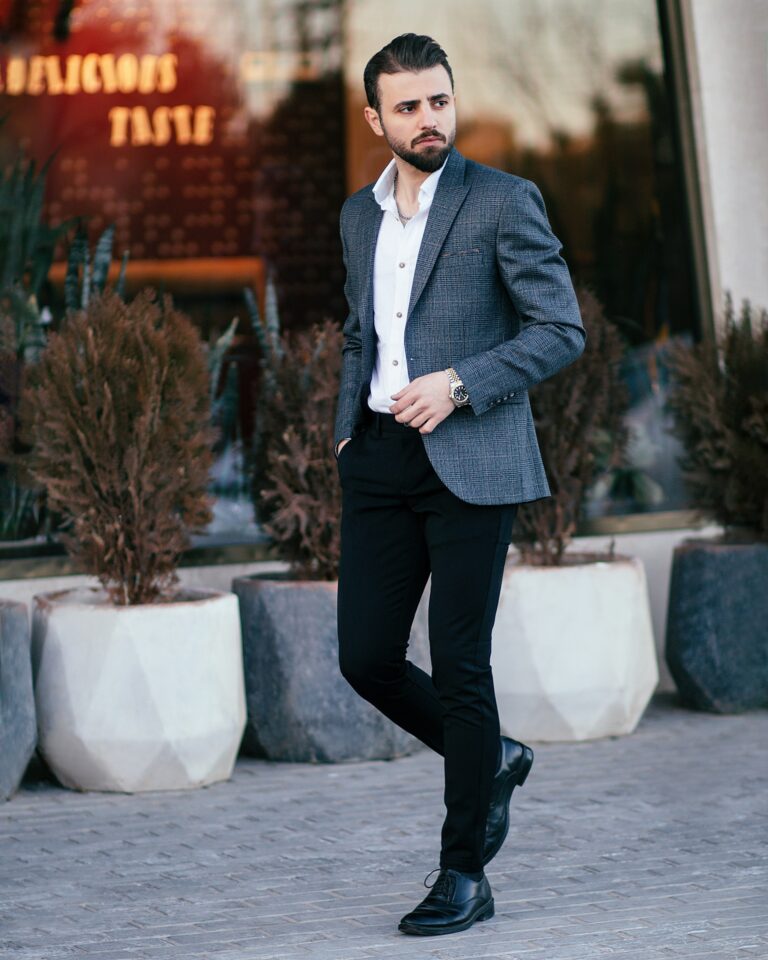Most men over 45 dress the same way they did 20 years ago. Their closets contain faded polo shirts, baggy jeans, and running shoes worn for everything except running. This approach to clothing sends a specific message to potential partners: you stopped caring about your appearance somewhere around 2005. The connection between how you present yourself and your success in dating runs deeper than surface-level attraction. Men who update their style report feeling more comfortable approaching women, maintaining conversations, and securing second dates.
The Psychology Behind First Impressions and Personal Presentation
Style serves as nonverbal communication that speaks before you do. Research from behavioral psychology shows that clothing choices and grooming habits directly influence how others perceive competence and attractiveness within the first seven seconds of meeting. For men over forty, this becomes particularly relevant when re-entering the dating scene. The connection between appearance and self-perception creates a feedback loop where looking polished translates to feeling more assured. This psychological principle applies across various contexts, from professional settings to social situations, with boosting your confidence after 40 becoming a natural outcome of intentional style choices rather than a forced effort.
Personal presentation affects neural pathways associated with self-esteem and social comfort. When men invest time in finding clothes that fit properly and developing consistent grooming routines, they report increased willingness to initiate conversations and maintain eye contact during dates. The impact extends beyond superficial changes. Men who update outdated wardrobes often describe feeling more authentic and aligned with their current life stage. This alignment between external appearance and internal self-concept reduces cognitive dissonance during social interactions, making conversations flow more naturally and reducing anxiety around meeting new people.
Breaking Free From Style Stagnation
Men tend to lock into a clothing formula during their 30s and rarely deviate. This pattern becomes problematic when returning to dating after divorce or loss. The cargo shorts and oversized t-shirts that worked for weekend errands send the wrong signals in dating contexts. Women interpret these choices as indicators of broader life patterns: resistance to change, lack of self-awareness, or diminished effort in personal relationships.
Style stagnation often stems from practical concerns. Men prioritize comfort and functionality over appearance. They assume fashion requires extensive knowledge or substantial financial investment. These assumptions prevent exploration of simple improvements that require minimal effort yet produce noticeable results.
Core Wardrobe Elements That Matter
A functional dating wardrobe requires five key pieces. Dark wash jeans without fading or distressing fit most casual dates. Two well-fitted button-down shirts in white and light blue work for dinner dates or coffee meetings. A navy blazer elevates any outfit without appearing overdressed. Leather shoes in brown and black replace athletic footwear for adult social situations. A quality watch communicates attention to detail.
Fit determines 80% of how clothing looks on your body. Shirts should follow your torso without billowing. Pants need proper length, ending at the top of your shoe without bunching. Jacket shoulders must align with your actual shoulders. These adjustments cost $20 to $50 at a tailor but transform how clothes present your physique.
Grooming Standards for Mature Men
Hair management becomes critical after 45. Thinning hair looks better short than attempted comb-overs. Gray hair requires different care products to prevent yellowing. Regular barber visits every 3 to 4 weeks maintain shape between cuts. Ear and nose hair need weekly attention with proper trimmers.
Skin care extends beyond basic washing. Men’s skin thickens with age, requiring exfoliation twice weekly. Moisturizer prevents the dry, flaky appearance that ages faces prematurely. Sunscreen application daily reduces age spots and maintains even skin tone. These three products take 2 minutes to apply but create noticeable improvements within weeks.
Strategic Color Selection
Color choices affect perceived energy and approachability. Navy, charcoal, and olive green provide sophisticated alternatives to black. Burgundy and forest green add personality without appearing juvenile. White and light blue remain safe choices for shirts but require proper laundering to maintain crispness.
Pattern mixing follows simple rules. One patterned piece per outfit prevents visual confusion. Stripes pair with solid colors. Small patterns work better on larger frames. Checks and plaids suit casual settings while solid colors adapt to various contexts.
Practical Implementation Steps
Start with one complete outfit. Purchase quality basics that coordinate: dark jeans, white shirt, navy blazer, brown leather shoes. Wear this combination to build comfort with the new style. Add pieces gradually as confidence increases.
Schedule professional services. Book a haircut with a stylist who works with mature men. Request specific advice about your face shape and hair texture. Establish a grooming routine that takes 10 minutes each morning.
Common Pitfalls to Avoid
Athletic wear belongs in gyms, not restaurants. Graphic t-shirts with slogans or band names appear juvenile on men over 45. Oversized clothing attempts to hide body changes but actually emphasizes them. Excessive cologne overwhelms rather than attracts. Jewelry beyond a watch and a wedding ring rarely improves appearance.
Dating profile photos require particular attention. Sunglasses in every photo prevent eye contact. Group photos make identification difficult. Photos from 10 years ago set unrealistic expectations. Bathroom selfies suggest limited social connections.
Measuring Progress
Confidence improvements manifest in specific behaviors. Men report initiating more conversations at social events. Eye contact duration increases during interactions. Compliments from friends and colleagues become more frequent. Dating app matches increase in quality and quantity.
Physical changes occur gradually. Posture improves when wearing properly fitted clothing. Walking pace quickens with comfortable, appropriate footwear. Gestures become more expansive when feeling well-dressed.
Style changes for mature men require minimal investment but produce measurable results in dating contexts. The process involves replacing outdated items with current alternatives, establishing basic grooming routines, and selecting clothes that fit properly. These adjustments communicate self-respect and social awareness to potential partners while increasing personal confidence during interactions.

